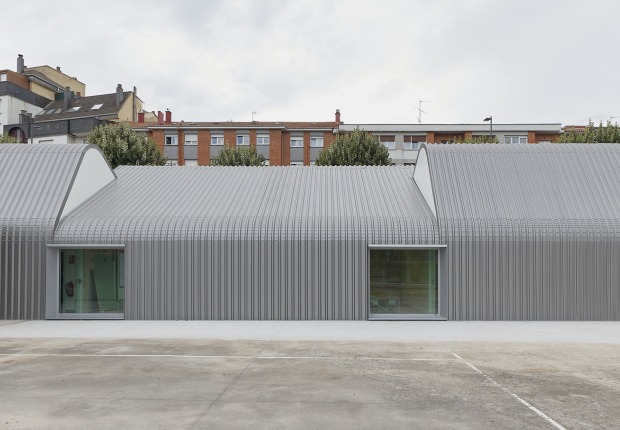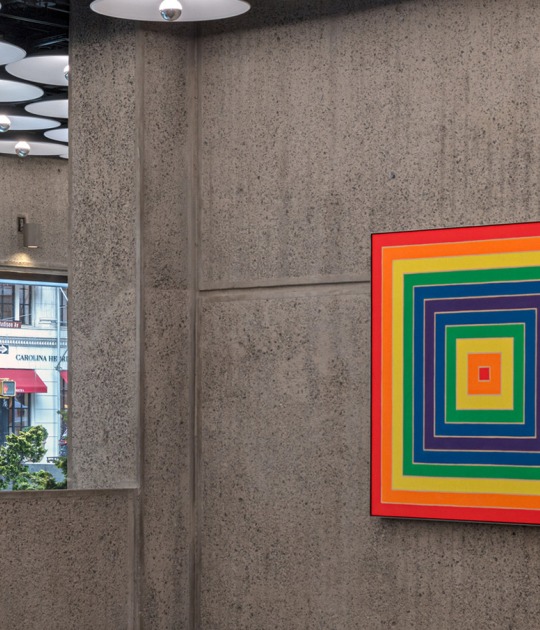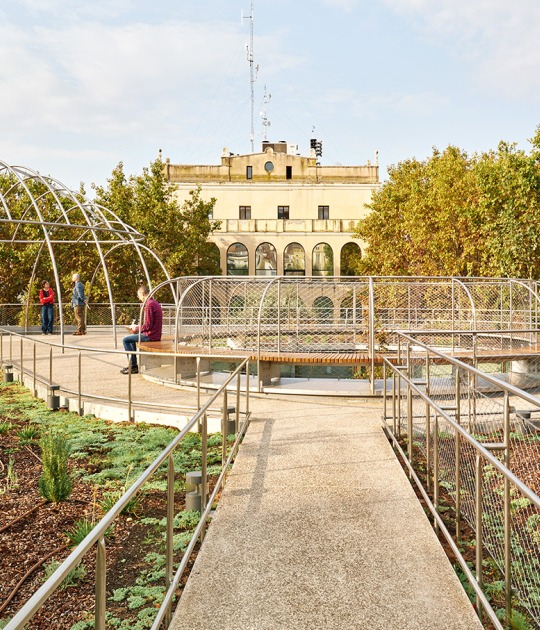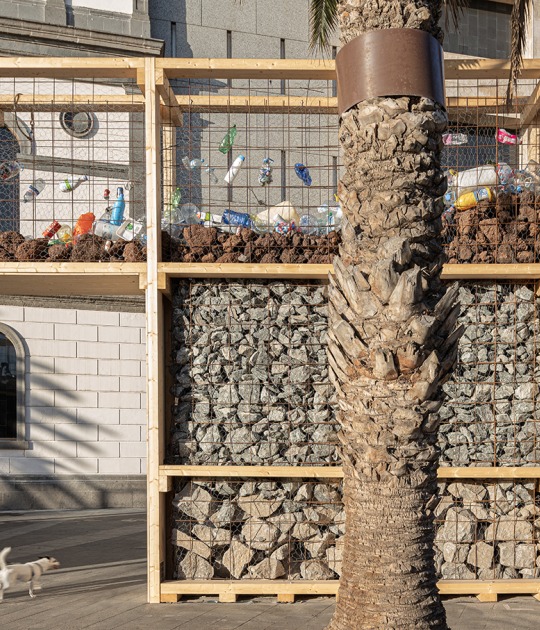Over the course of a century, the Werdareal site has evolved into a major hub of Swiss media activity. Numerous media enterprises have flocked to this site by the river Sihl since this trend began in 1902, when the editorial offices and printing works of the Tages-Anzeiger opened there.
Wooden supporting structure and magnificent glass facade.
The volume of Shigeru Ban's building conforms to the usual perimeter development and construction height standards in this district, and its mansard roof and overheight ground floor are in keeping with the typical characteristics of architecture in the Aussersihl quarter. At the same time, the new structure stands out because of its sustainable construction techniques and materials. The defining feature of the building is a wooden supporting structure for which 2,000 cubic meters of spruce wood were used. This supporting structure performs its function without any additional steel reinforcements, and was assembled on site from prefabricated components that were precision-milled down to the last millimeter. The magnificent glass facade creates a bright and welcoming interior ambience.

A sustainable contribution to architecture
Tamedia's aim was to make this building as sustainable as possible. A double facade facing the Sihl river acts as a buffer against climatic conditions as well as a natural ventilation system, and it affords space for meeting rooms and lounges that can be opened up to give onto the river. Wood is a renewable construction material, and its use helped to reduce emissions even during the construction phase. The building will also be operated without CO2 and will not make any use of nuclear power. Moreover, fossil fuels are eliminated thanks to a futuristic heating and cooling system that utilises the groundwater.




















































